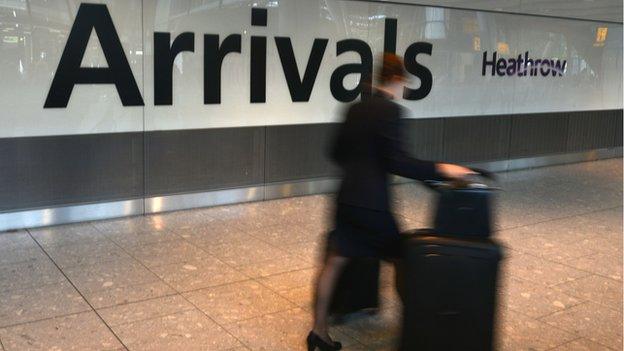London's population high: Top metropolis facts
- Published
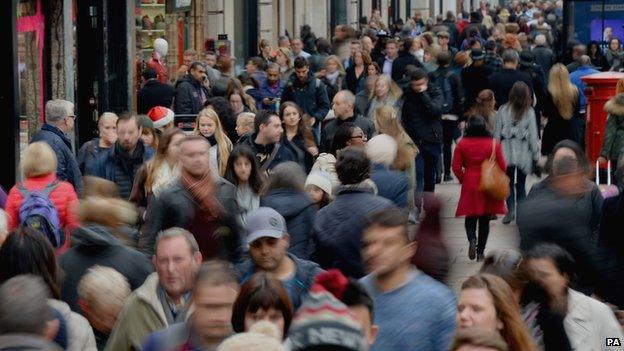
London's population has increased by 12% since 2001
London's population has hit 8.6m people, according to the Greater London Authority - and the last time it was that big was 76 years ago. The metropolis is already Europe's largest city and the 6th richest place on Earth. Here are some key facts about the capital.

1. Fastest growing borough
Tower Hamlets, external in east London is expected to see the fastest growth according to the Greater London Authority's, external (GLA) figures. Between 2015 and 2039 its population is forecast to grow by 101,000. Newham, external will see predicted growth of 91,000 between 2015 and 2039. Followed by Barnet, external which expects to see growth of 76,000 between 2015-2039.
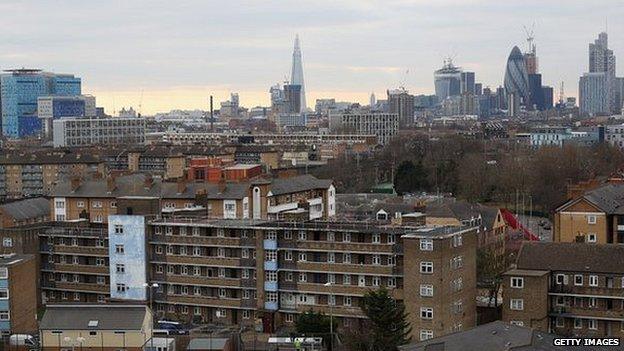
Towering numbers: Tower Hamlets has the fastest growing population

2. Largest growth
Hillingdon, external is the borough projected to see the largest growth. In 1939 there were 159,000 residents. By 2039 there will be 316,000 people living there - a rise of 82%. Havering, external closely follows with an increase of 80%. In 1939 there were 139,000 residents but by 2039 there will be 291,000 people living there.

Hillingdon is the borough projected to see the largest growth

3. Water, water everywhere
To cope with 8.6m Londoners, Thames Water, external has 10,000 miles of pipes under the city and deals with 4.4bn litres of wastewater per day. The company reports that Londoners use 10% more water a day than anywhere else in the UK.

The Victorian sewage system under London is being updated to cope
London's sewerage network was built following a series of outbreaks of cholera that killed 40,000 people in the first half of the 19th Century - the Victorians believed the disease was contracted through airborne "miasma" due to sewage in the open air.
The sewers overflow on a weekly basis, flushing 39m tonnes of raw sewage straight into the Thames each year. To cope with the growing population a £4.2bn, 15-mile (25km) long "super sewer" - officially known as the Thames Tideway Tunnel - should be operational by 2023.

4. Buses, trains and automobiles
The capital's masses need to get around and London Underground set new historic records for passenger numbers at the end of last year - a record 4.725m in one day during November, beating the 4.5m recorded during the London 2012 Games. London's red buses are now dealing with 6.25m passenger journeys every day, the highest demand since the late 1950s according to Transport for London, external.
.jpg)
There are 6.25m people on buses in London each day
Meanwhile the London Drivers Association reports there are 24,500 cabbies picking-up and dropping-off across the city.

5. The decline and rise of inner London
The GLA, external figures show inner London's population dropped between the 1940s and late 1980s. In Westminster, the population stood at 347,000 in 1939 but fell to 172, 000 by 1988. In 2011 it increased again to 219,000. Tower Hamlets, meanwhile, fell from 419,000 in 1939 to 159,000 in 1988. However, by 2011 it had shot up again to 254,000. The overall inner London population was 4.4m in 1939, had declined to 2.5m by 1988 but returned to 3.2m by 2011.
.jpg)
Queues for London buses during an Tube strike in 1939
The post-1939 decline in London's population has been attributed in part to the Blitz and evacuations during World War 2, external, and the construction of new towns that followed.

6. London's packed classrooms
London, unlike anywhere else in the country, is a graduate economy. According to the Office for National Statistics, 60% of the working-age population in inner London has a degree.
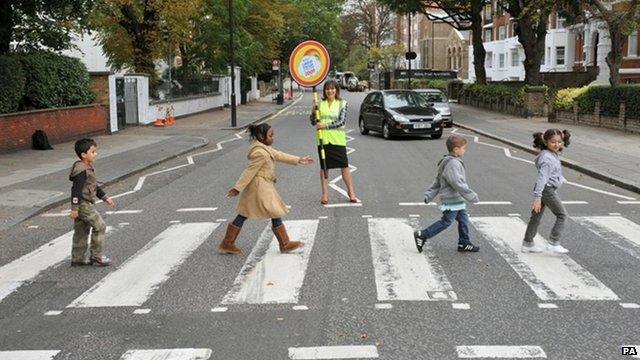
More than 80% of children in inner London primary schools are from ethnic minorities
In terms of the diversity of the population, more than 80% of children in inner London primary schools are from ethnic minorities and more than half do not speak English as a first language.

7. Slowest growth
The City of London is in line for the slowest growth. Between 2015 and and 2039 its population is forecast to grow by 4,000 people.

The City of London has the slowest predicted population growth
Richmond has the second slowest population increase, where the number of people is expected to expand by 15,000 between 2015 and 2039, while Sutton follows with a predicted 19,000 increase.

8. All squeezed in...
The total area of London is 1,572 sq km (607 sq m) with a population density of 5,491 people per sq km.
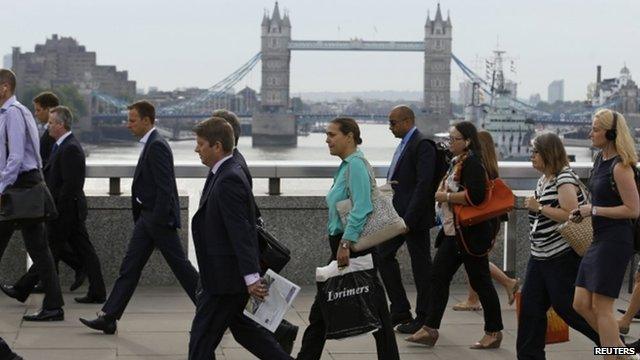
Despite feeling overcrowded, London's population density is dwarfed by cities like Mumbai, Seoul and Lagos

9. Hatched and dispatched
According to GLA figures there were 131,011 births in 2013 - that's 359 babies born each day.
And during 2013, some 48,078 Londoners died - equivalent to 132 people passing away each day.

On average, one baby was born every four minutes in London during 2013

- Published2 February 2015

- Published30 July 2014

- Published26 June 2014
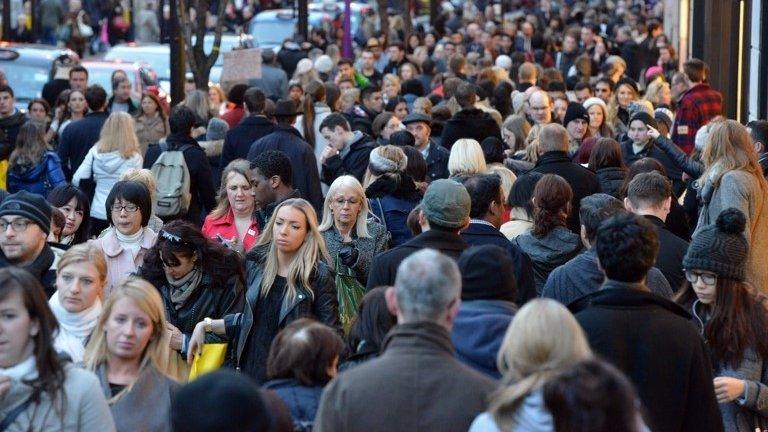
- Published14 May 2014
